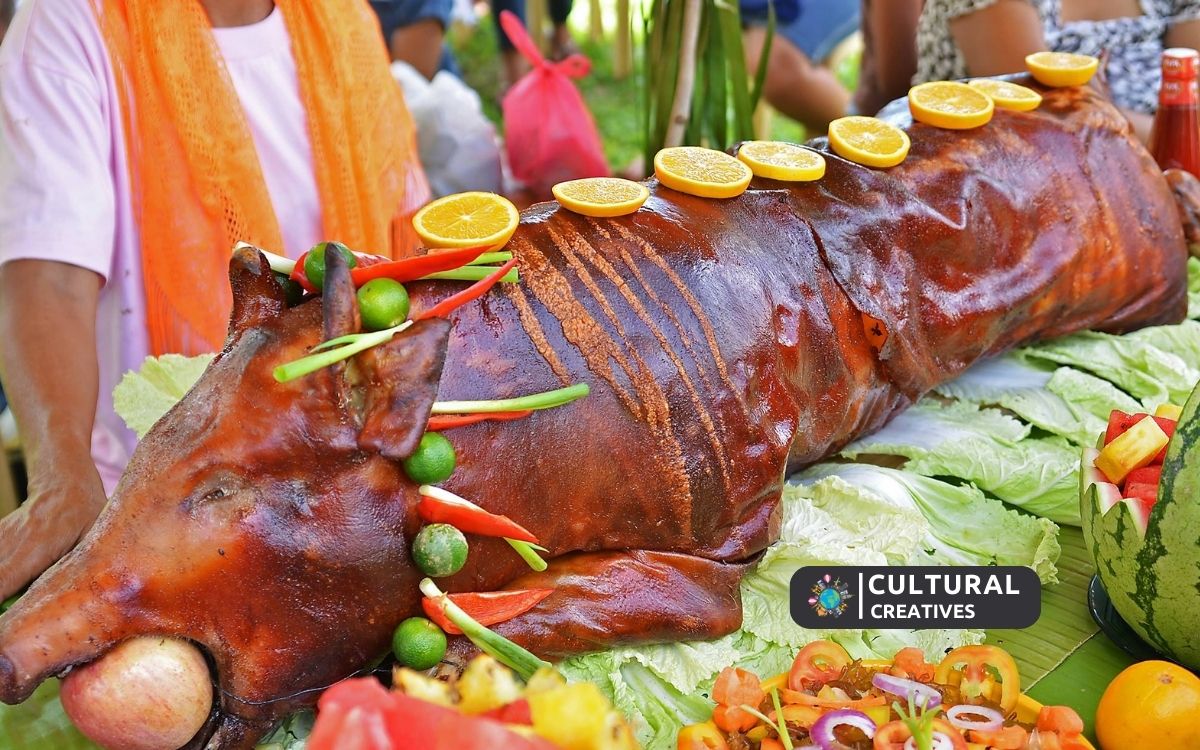The Lechon Festival is an annual celebration in the Philippines that honors the traditional Filipino dish, lechon. Balayan, Batangas, becomes the center of festivities every June 24th, coinciding with St. John the Baptist Day.
Each year, the Festival draws locals and tourists alike with its vibrant parade of roasted pigs, which are elaborately dressed and paraded through the streets.
The festival is not just about indulging in lechon; it is a day full of water dousing, symbolizing the baptism of Christ, and a testament to the Filipino spirit of camaraderie and celebration. This cultural event showcases the rich culinary traditions of the Philippines and provides a glimpse into the strong sense of community and religious devotion in Filipino culture.
Lechon Festival Place Of Origin: A Gastronomic Pilgrimage
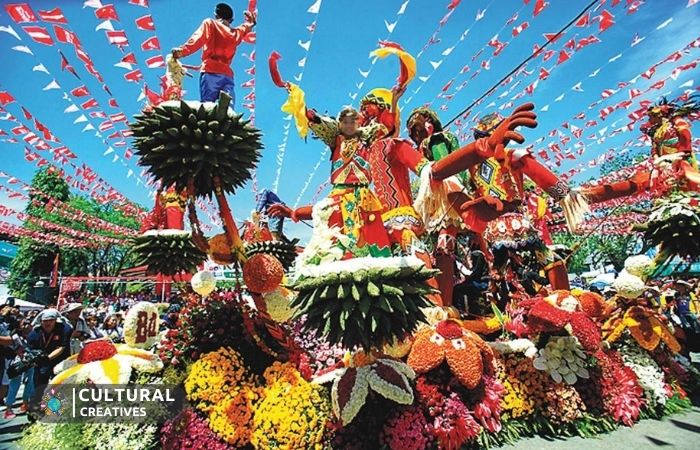
Imagine a tableau vibrant with color, alive with the sounds of merriment, and the air filled with the irresistible aroma of perfectly roasted pork. This is the essence of the Lechon Festival, an annual gastronomic pilgrimage that draws food enthusiasts and adventure seekers alike to a celebration unlike any other. Revered as the pièce de résistance of Filipino festivities, the lechon, a whole roasted pig, isn’t merely a dish but a cultural icon, commanding its very own festival.
Historical Roots And Cultural Significance Of Lechon
The Festival not only tantalizes the taste buds but also pays homage to a tradition steeped in history. Lechon, derived from the Spanish term for “suckling pig,” has evolved into a Filipino culinary staple. Its roots can be traced back to the era of Spanish colonization, embedding itself into the fabric of Philippine culture. The lechon symbolizes not only gastronomic delight but also communal unity and celebration, marking special occasions and grand festivities across the archipelago.
Overview Of The Celebrations
The scenes at the Lechon Festival are a feast for the senses. Streets come alive with vibrant parades, colorful costumes, and the rhythmic beats of traditional Filipino music. Most notably, lechon, in all its golden-brown splendor, is put on full display. Gracing every banquet, these succulent pigs are lavishly decorated, often with elaborate props, and paraded for spectators before culminating in a grand communal feast. Attendees indulge in the succulent, crispy-skinned delight, savoring the rich flavors that are a testament to the age-old roasting techniques passed down through generations. Each year the festival not only celebrates the culinary masterpiece but also fosters a spirit of shared heritage and pride among the Filipino people.
The Art Of Lechon Preparation: Tradition Meets Culinary Expertise
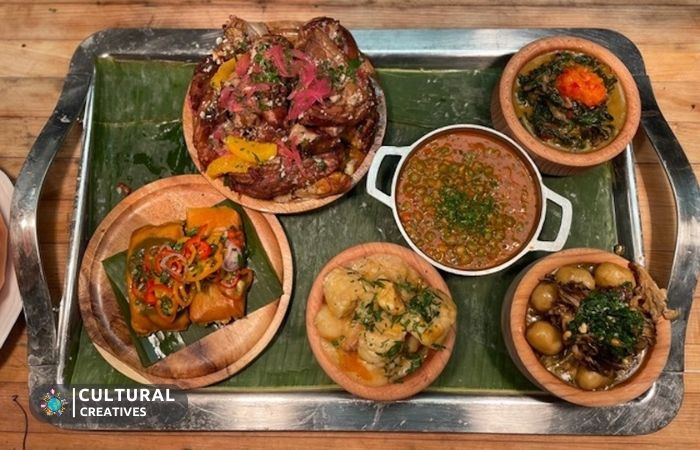
The Art of Lechon Preparation: Tradition Meets Culinary Expertise is an exuberant display of Filipino culture, enchanting the senses with its mouthwatering flavors and festive presentation. This time-honored practice involves not merely roasting a pig, but also weaving together culinary skills honed over generations and local culinary practices. Embraced during joyous occasions and local festivals, the preparation of Lechon symbolizes the communal spirit and the rich gastronomic pride of the Philippines.
Choosing And Preparing The Pig: An In-depth Look
The process begins with selecting a pig that is of ideal age and weight, ensuring that the meat is tender and the skin capable of achieving the desired crispiness. Preparing the pig involves a meticulous process, spanning from cleansing it thoroughly to stuffing it with a mixture of herbs and spices that vary from region to region.
- Procurement of high-quality, free-range pigs
- Careful cleaning of the pig’s interior and exterior
- Traditional stuffing of the pig with fresh local ingredients
Secrets Of The Perfect Lechon: Techniques And Spices
To reach the pinnacle of Lechon perfection, experts employ specific roasting techniques that result in succulent meat and crackling skin. The pig is skewered on a bamboo pole and roasted over charcoal, a method that requires constant attention and rotation for uniform cooking. The selection of spices is central to the flavor profile, and while each Lechonero has their own secret blend, common spices include:
| Spice | Characteristic |
|---|---|
| Salt | Enhances natural flavors |
| Pepper | Adds mild heat |
| Garlic | Imparts earthy tones |
| Lemongrass | Contributes citrus notes |
| Bay leaves | Adds depth with a herbal touch |
Regional Variations Of Lechon Across The Philippines
While Lechon is beloved nationwide, it takes on unique identities across different regions with variant preparation methods and ingredients. Notable variations include:
- Lechon Cebu: Known for its savory flavor from a rich mix of spices and herbs.
- Lechon Manila: Typically less herbaceous but paired with a liver-based sauce for added flavor.
- Lechon Davao: Often stuffed with extra lemongrass, giving it a distinct fragrance and zest.
Each region’s take on Lechon carries with it a story that is deeply embedded in its festivities and culture, making the dish not just a feast for the palate, but also for the soul.
Festival Highlights: Savoring More Than Just Lechon
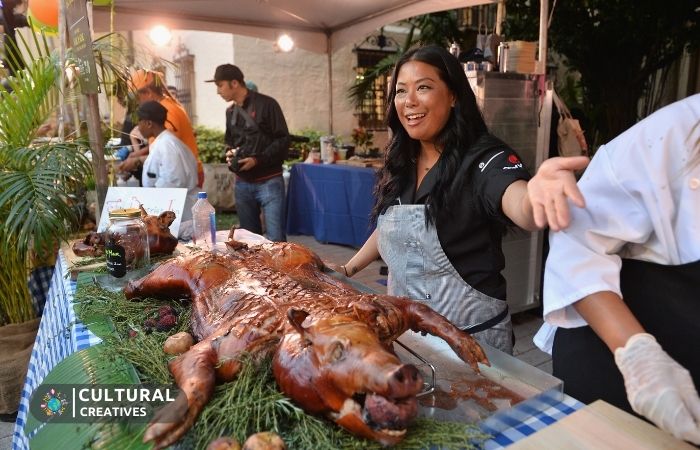
While the succulent Lechon, roasted to perfection, remains the star of the Lechon Festival, this vibrant event offers a kaleidoscope of attractions beyond the culinary wonder. Indulge in a myriad of sensory delights, where tradition meets spectacle, and every moment is a celebration of culture. Immerse yourself in the liveliness with parades, music, dances, and an array of local dishes that will leave you in awe of the Philippine’s rich cultural tapestry.
Parades And Contests: A Feast For The Eyes
As the festival unfolds, the streets come alive with the vibrant parades and eye-catching contests. Giant floats, adorned with intricate designs and effigies, traverse through the jubilant crowds. Costumed participants engage in Lechon dressing contests, showcasing their creativity as they dress up the lechon in whimsical themes.
- Colorful street dancing competitions fuse traditional folk with contemporary moves.
- Lechon decoration challenges unveil a feast for the eyes, with each entry more elaborate than the last.
Cultural Performances And Music: A Feast For The Soul
The rhythm of the festival beats stronger with every performance. Traditional dances, like the Tinikling and Cariñosa, tell stories of the nation’s history and folklore. The sound of indigenous instruments blended with modern melodies fills the air, as local musicians elevate the atmosphere of the fiesta.
- Cultural performances by various groups depicting epic Filipino tales.
- Live bands and DJs injecting contemporary vibes into the night.
Other Culinary Delights: A Feast For The Palate
To complement the festival’s centerpiece, myriad culinary delights from across the archipelago take center stage. From the savory Adobo to the sweet, creamy Halo-Halo, each dish offers a burst of flavor, unraveling the tapestry of Filipino gastronomy.
| Local Treats | Description |
|---|---|
| Adobo | A rich and savory dish, often considered the unofficial national dish of the Philippines. |
| Sinigang | A sour soup loved for its robust flavors and comforting warmth. |
| Halo-Halo | An indulgent dessert featuring a mix of sweetened fruits, beans, and ice cream. |
For the epicurean adventurer, it serves up an extravaganza not just to satiate the hunger but to enrich the spirit with an all-encompassing feast for the senses.
A Social And Economic Perspective
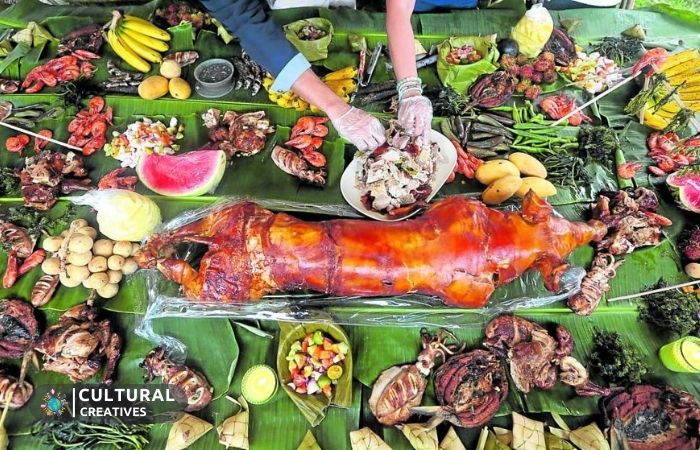
A Social and Economic Perspective.’ This vibrant celebration goes beyond feasting on succulent roasted pig; it weaves into the cultural tapestry of the community, stimulating economic activity and social cohesion. Delve into the intricate ways the festival bolsters the spirit of its people and acts as a catalyst for local prosperity and challenges faced in its execution.
The Festival’s Role In Fostering Community Spirit
Lechon Festival brims with music, dance, and the irresistible aroma of lechon – the spit-roasted pig that is the star of the show. Families gather, friends reconnect, and neighbors share in the joyous ambiance. Unity and pride swell in the streets as townsfolk parade their culinary masterpiece. This shared experience reinforces community bonds, echoing tradition, and heritage through generations.
- Inter-generational engagement through preparation and celebration traditions
- Promotion of local culture and customs, strengthening identities
- Opportunity for social mingling, fostering a sense of belonging and togetherness
Economic Boost And Tourism Draw
The festival not only ignites communal passion but also translates into significant economic advantages. Local businesses witness a surge in sales as tourists flock to savor the reputed lechon, explore the marketplaces, and take home souvenirs. Hotels, eateries, and vendors enjoy the increase in patronage, fueling the local economy and creating job opportunities.
| Indicator | Impact |
|---|---|
| Tourist Arrivals | Significant increase during festival period |
| Local Business Revenue | Noticeable boost in commerce |
| Employment Opportunities | Seasonal and ancillary job growth |
Sustainability And Challenges Of Organizing The Festival
Organizing festival entails meticulous planning and resources, exerting pressure on the local infrastructure and environment. Challenges such as waste management, crowd control, and maintaining public order are paramount concerns. Steps towards sustainable practices, such as biodegradable utensils and efficient waste disposal mechanisms, assure the festival’s longevity and minimal ecological footprint.
- Implementation of eco-friendly materials
- Structured waste management protocols
- Community education on sustainability practices
Tips For Travelers And Food Enthusiasts
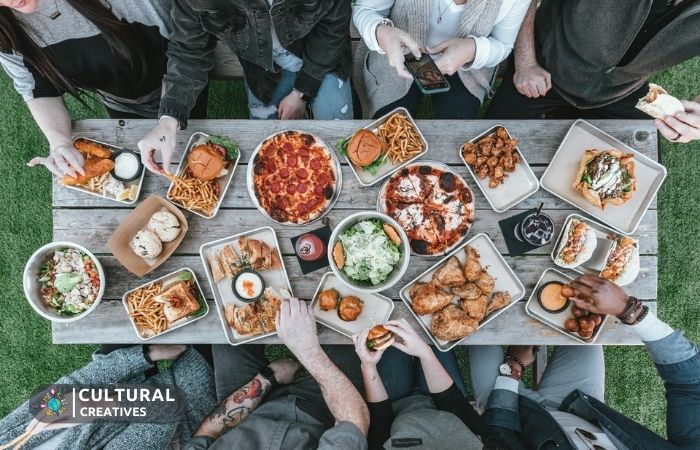
Ready to indulge in a gastronomic journey unlike any other? It also known as the Parada ng Lechon, is not just another food fest; it’s a vibrant celebration that honors a rich culinary tradition. As tantalizing aromas fill the air, streets come alive with the sights and sounds of a festive Filipino tradition. This event promises a feast for the senses and an authentic cultural experience. Travelers and food enthusiasts, prepare for a memorable escapade with these valuable tips!
Planning Your Visit: When And Where To Experience The Festival
Timing is everything when it comes to festivals, and the Lechon Festival is no exception. Held annually on June 24th in Balayan, Batangas, it coincides with the Feast of St. John the Baptist. The event can span multiple days, with peak festivities occurring on the day itself. Planning your visit involves several steps:
- Book early: Accommodations can fill up fast, so secure your stay well in advance.
- Local transport: Research your travel options within the Philippines to get to Balayan, Batangas.
- Festival schedule: Keep an eye out for the official schedule to catch key events like the lechon parade.
Do’s And Don’ts: Cultural Etiquette And Festival Practices
Respect the culture and traditions to ensure a pleasant experience for all involved. Follow these guidelines:
- Do’s
- – Enjoy the food offerings but do so in moderation to avoid waste.
- – Dress appropriately, considering the local customs and the tropical climate.
- – Bring essentials like water, sunscreen, and a hat.
- Don’ts
- – Don’t litter; always look for designated disposal areas.
- – Avoid disrespecting religious symbols and practices.
- – Refrain from obstructing the procession or other events for photos.
Beyond The Festival: Exploring Local Attractions
Cap off your experience by exploring Balayan’s local sights:
| Attraction | Description |
|---|---|
| Heritage Town: | Delve into history with a visit to well-preserved Spanish-era houses. |
| Beaches: | Unwind at the nearby pristine beaches of Calatagan and Lian. |
| Immaculate Conception Church: | Discover architectural splendor and tranquility at this religious site. |
Conservation Of Tradition
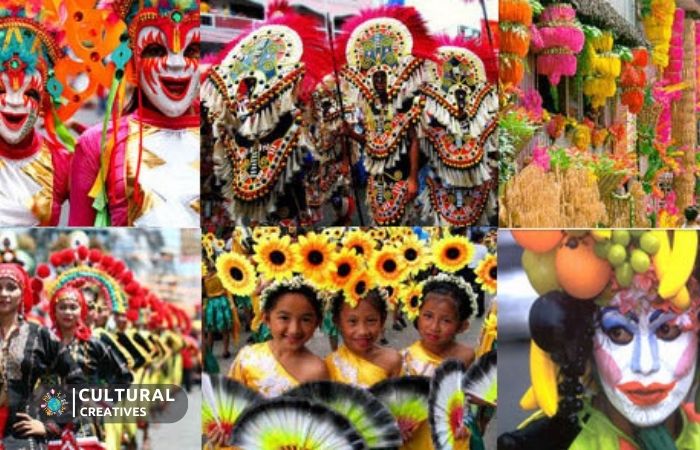
The sizzle of succulent pork turning golden over an open flame is a sight that’s integral to the Lechon Festival – a celebration deeply ingrained in many cultures. The preservation and promotion of these festivals is not just about maintaining a culinary practice; it’s about cherishing a rich cultural heritage.
Educational Initiatives And Local Involvement
Providing a platform for knowledge exchange is fundamental to the survival of traditional practices. Educational programs that highlight the history and techniques of Lechon preparation have emerged as pivotal. These initiatives often include:
- Workshops in local schools to foster interest among the youth.
- Community cooking classes for skill sharing and reinforcement.
- Competitions and awards to honor exemplary practitioners of the craft.
Through such programs, local communities become staunch guardians of their cultural legacy, ensuring that the spark of the Lechon Festival continues to burn bright.
Government Support And Global Recognition
Government entities play a crucial role in the conservation of cultural festivities. Support can manifest through:
- Funding for festival organization and infrastructure.
- Legislation that protects indigenous cooking methods.
- International outreach programs to showcase the festival’s charm.
When it receives global recognition, such as inclusion on UNESCO’s list of intangible cultural heritage, the tradition gains a protective shield, shielding it from the threats of modernity and globalization.
Adapting Traditions To Modern Times
To keep pace with changing times, it has embraced innovation. Organizers infuse traditional elements with modern twists:
| Traditional Element | Modern Adaptation |
|---|---|
| Lechon Cooking Techniques | Usage of eco-friendly and sustainable materials |
| Festival Publicity | Digital marketing to reach a wider audience |
| Cultural Performances | Interactive and virtual reality experiences |
Innovation ensures that the festival remains relevant and captivating. It invites a global audience to partake in this age-old tradition while still honoring its roots.
Conclusion
The Lechon Festival is a feast for the senses, igniting a cultural celebration unlike any other. It showcases a vibrant tradition that tantalizes taste buds and enlivens the community spirit. For food enthusiasts and cultural explorers, this event is a yearly must-see.
Embrace the flavors, dance to the lively beats, and become part of the Lechon legacy.

